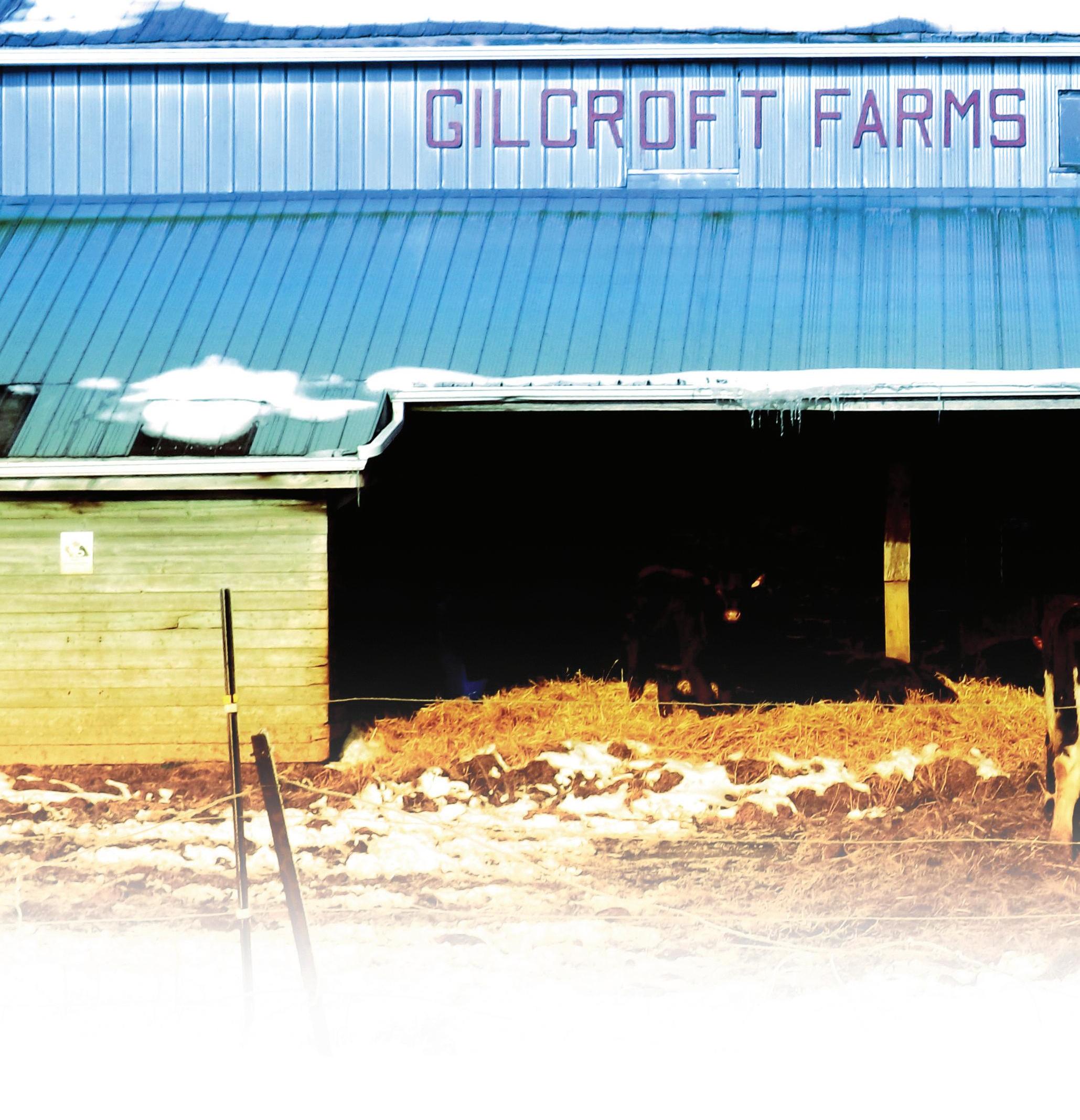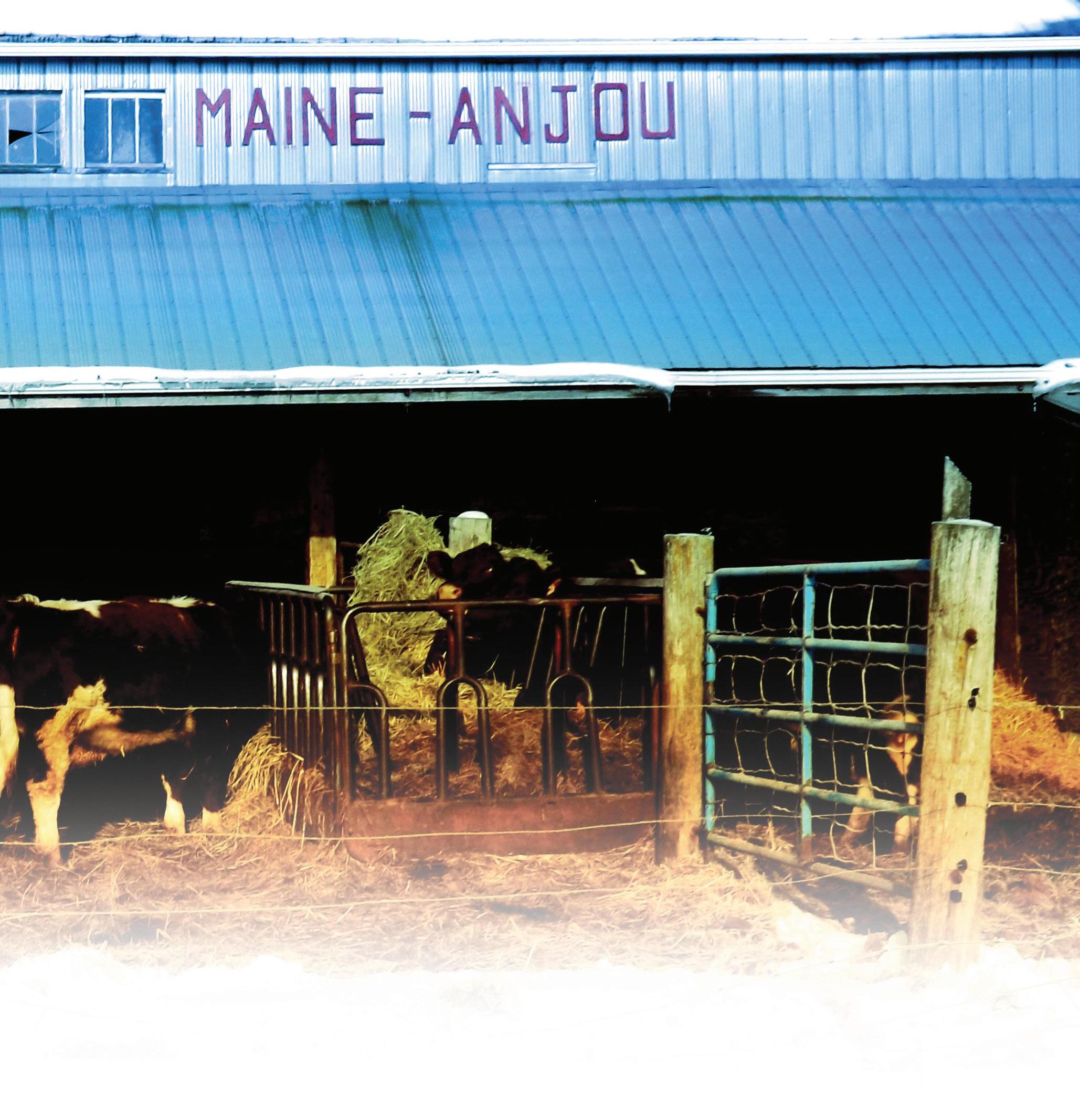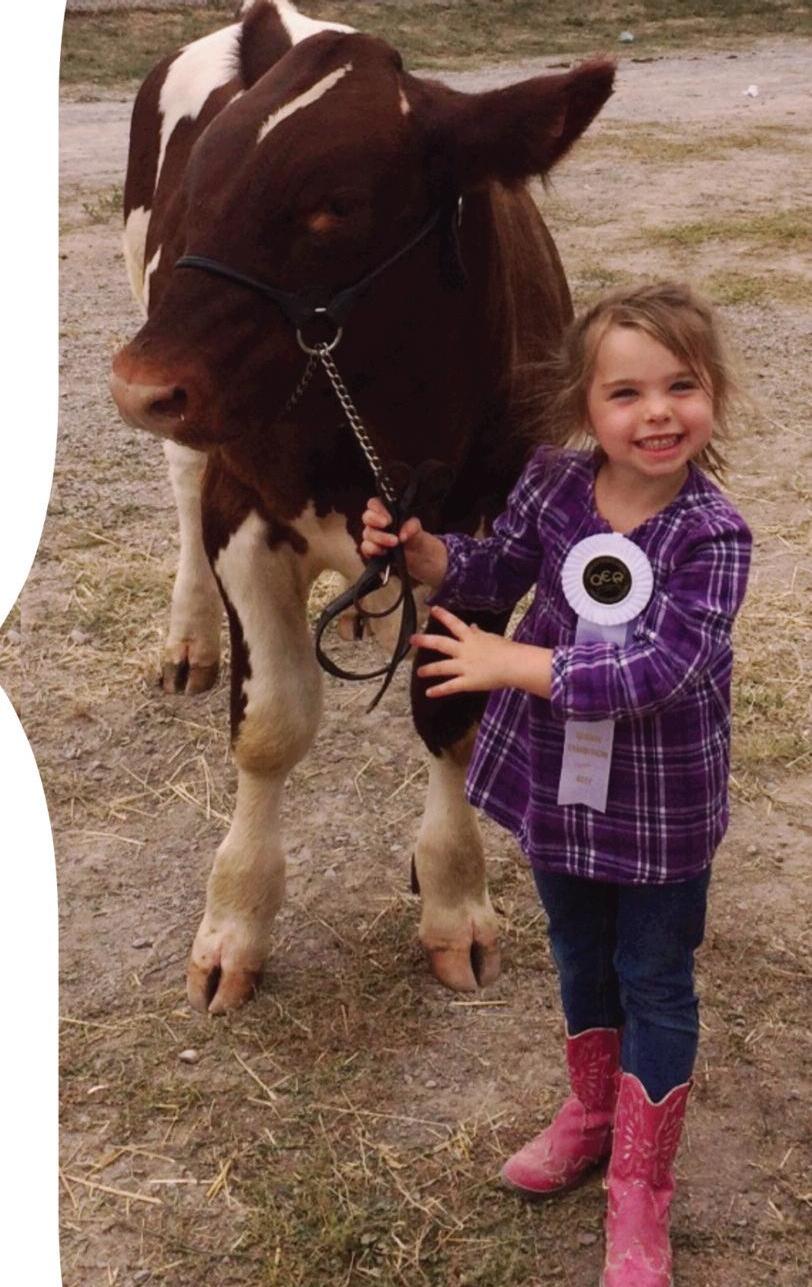
7 minute read
IN THE MAINE RING WITH GILCROFT FARMS
The 70s was a decade of taking chances in the beef industry. Like most other breeders, Gilcroft Farms at Demorestville, Ontario started out with a mixed herd of around 100 head of commercial cattle. Calving around 40 cows and feeding their own steers out. Gilcroft Farms used Charolais or Simmental bulls and kept any cow that could raise a decent calf. The opportunity to AI to Maine-Anjou became a game-changer for the farm and it started a lifelong interest in MaineAnjou for the Gilbert family. We caught up with Ron Gilbert, son of Keith and Theo to learn more about their operation.
Why fullbloods? What draws Gilcroft Farms to raise them?
Advertisement
In 1974, we AI bred a few cows to Maine-Anjou. When the calves came, they were big, fast-gaining and docile. About four years later we purchased our first fullblood Maine-Anjou bulls. At the time we were using a program called ROP, where we weighed calves at birth, weaning and yearling. The records soon showed we were getting much better gains at weaning as well as yearlings. that became the base of our fullblood herd. We still have some of those genetics in our herd today. Now, about half our herd is fullblood and the other half is high percentage red and white purebreds. So to answer the question in short, we raise fullbloods for their docility, frame size and easy fleshing ability along with their confirmation, structure soundness and longevity. We have had cows in our herd up to 15years old still raising calves.
The Gilcroft breeding program is based on what traits?

We based our breeding program on a lot of the traits that drew us to the breed many years ago, docility, frame score, fleshing ability, structural soundness, milking ability and longevity.
We want cattle that come to see you when you go to the field, easy to work with and never get excited. I want to be able to go out and move a cow or bull into a different field or into the barn by myself when I need to. We also like that the little kids can go out around them anytime. keep them in that range. In turn, our calves most years average 110-115 lbs. at birth, heifers are little lighter and mature cows are heavier. We wean at six to seven months and average around 750 lbs. at weaning.
We use a program in Ontario called BIO which provides us with data based on birth, weaning and yearling weights. They also provide data on cows and bulls based on this information. We also test bulls every year and look for gains between 4-5 lbs a day.
We try to raise animals that will go out and perform and stand out in anyone ’ s herd under any program.
One item at calving time you can ’t do without?

Best advice to someone new to the breed?
If I have to come up with just one thing, it would have to be good luck. There are many different factors that play into a successful calving season. We calve primarily in January and February so weather definitely can be a big factor. Cows always seem to hold out for that really cold night under a full moon. Luckily, we have a few good calving pens and lots of dry bedding. We watch them closely and make sure there are no complications and that they get dried off quickly. On the really cold days I keep a balaclava on hand to cover up ears to keep them from freezing. I also keep some baler twine on hand, just in case they need a little help. The faster they are born, the less stress on the cow and calf. Most times they are up and ready to nurse in under a half hour.

The other two things you need but never want to use is a good calving jack and when things go really wrong, a good vet. There is no money in dead calves.
Keith and Theo Gilbert’s great granddaughter, Brooklyn with a Gilcroft Maine-Anjou calf.
I guess my advice to someone new in the breed would be to do your research. Talk to other breeders in your area and across the country. There are many different ideas on bulls, calving, breeding and what a person wants to accomplish. Find the type of cattle that work for you and your passion. Everyone will have a different outlook on what works for them.

Gilcroft team at the Lindsay Fair, 2016. Liz Williams ( Keith’s granddaughter ) Ron Gilbert, Sarah Fregeau and Keith Gilbert.
Meg B
Productions sales success and planning - when do you start planning and how do you gather consigners?
Our production sales have come a long way. We started in the late 1980s at our little sales barn with a couple of consigners selling percentage and purebred cattle to local cattleman. We had a sale about every three to four years at that time. In around 2008, we moved to the sales barn we still use today. We started to spend more time planning and advertising. In 2012, we added the online feature and went to a biannual sale. The online service added a lot bigger crowd and we started moving cattle west and to the states. Fast-forward to 2020, probably our best sale to date. We now have an annual sale with having sold cattle in six states and five provinces. Sales take a lot of preparation starting early in the year. We book a date and get it all arranged with the sales barn and online services.
Our consigners have all supported our sale over the years. Therefore, a lot of the cattle in the sale have our genetics in their background. The stipulations for an animal to qualify for our sale are they must be good quality, sound cattle, must be fullblood or purebred and must be red and white - yes we like them all to be the colour of the original Maine-Anjou. Advertising starts around the end of August and in September we start collecting pictures and paperwork to put our catalog together. We don ’t clip or fit any cattle for our sales. We believe in selling them as “they are everyday ” . After the catalog is printed then its time to start contacting people and sending out catalogs. We spend countless hours sending emails, texting and making phone calls. The closer to the sale date, the more hours spent. Sale time arrives, we move the cattle to the sales barn the day before and preg check the night before. Sale day starts by penning and getting everything set up for the buyers to view. As the day progresses, we talk to on-site buyers, take phone calls and send last minute pictures and videos. When the sale finally starts we actually get a chance to take a break, maybe.
Once the sale is over, we organize trucking and get cattle moved. It normally takes a few weeks to get them headed to where they are going. Any cattle going to the US come home to get vet paperwork done, then trucking arranged and broker paperwork set up.

After the sale, I keep in contact with buyers to see that the cattle arrived and settle in okay. Anything bred, I like to know when they calve and even see pictures of the calves. A little follow-up goes a long way to making the next sale a success.
Favourite Show
on the show circuit and why?
As a family, we enter about eight fall fairs throughout Eastern Ontario and Quebec. It is really hard to pick a favourite because they all have certain things we enjoy. We do two local fairs which are more about the 4-H shows. We enter four that are more ag-based fairs and talk to a lot of people about our cattle at these fairs.
We have Lindsay Exhibition fair which is our Ontario show and our largest show. I guess this would have to be our favourite as we get to see other breeders and have a little stiffer competition. We look forward to seeing fellow breeders and catching up with them. We also support local youth in the 4-H program by taking in youth, supplying them with calves and teaching them about cattle and showing.



